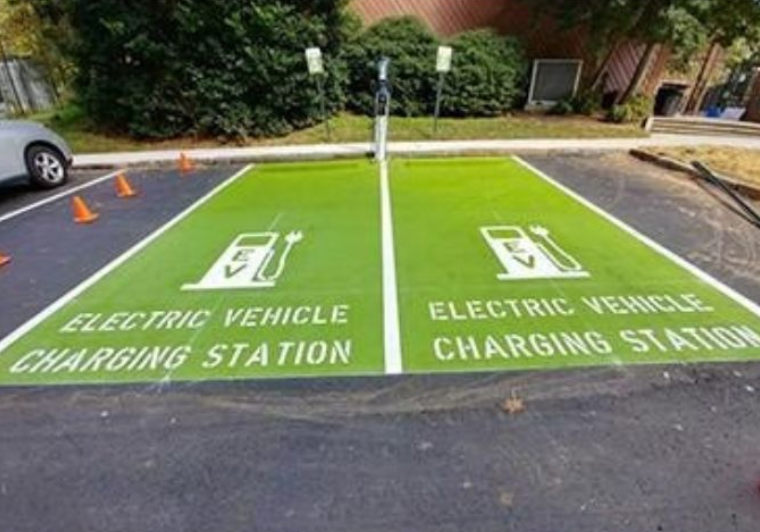As electric vehicles become more common, public and private investment in charging infrastructure is growing rapidly. Parking lots, garages, and dedicated charging stations are being developed to support demand, but many overlook a crucial factor in durability: surface coatings. These coatings play a critical role in protecting infrastructure, guiding vehicle placement, and maintaining the clean aesthetic of high traffic charging areas. Selecting the right ev charging station coating early in the planning process helps reduce long-term maintenance and operational disruptions.
From extreme weather to tire wear and fluid drips, coatings in these zones must withstand heavy use while supporting safety and visibility. Proper material selection ensures EV charging lanes remain clearly marked, slip-resistant, and resistant to fading, cracking, or peeling over time.
Coating durability and environmental resistance
Different environments call for different coating formulations. Outdoor EV stations may need UV-resistant and moisture-repelling finishes, while indoor settings could prioritize chemical resistance and fast drying. Temperature swings, humidity levels, and traffic volume all impact the longevity of any applied surface material. Additionally, coatings should have strong adhesion to pavement or concrete to prevent early failure. Products engineered with elastomeric or polyprotic properties offer greater flexibility and resistance under high stress, especially where expansion and contraction cycles are common.
Pigmentation also matters. Coatings must maintain visibility over time, especially for directional arrows or safety signage painted directly onto the charging pad. Using color-stable coatings designed for high visibility prevents frequent touchups and preserves the clarity of parking demarcations.
See also: How Metal Roofing Enhances Home Value and Curb Appeal
Benefits of investing in specialized coatings
EV-specific spaces are more than parking spots; they are branded access points for users. The right coating preserves the overall visual quality of these areas while also supporting organizational branding through custom colors or logos. Highly durable coatings reduce repainting frequency and protect underlying surfaces from degradation. Longevity also brings cost efficiency. With the rise in EV adoption, traffic at charging stations is expected to intensify, especially in urban areas. A poor-quality coating will wear faster under constant use, leading to higher maintenance costs and potential user dissatisfaction.
While many may focus on hardware and electrical systems, the surrounding pavement plays an equally important role in performance and perception. Choosing coatings that meet the operational demands of your environment helps support a longer-lasting, safer infrastructure.
Preparing the surface and application considerations
No coating will perform well without proper surface preparation. EV station coatings require clean, dry, and sound substrates. Removal of existing flaking paint, oils, or debris is essential. Once prepared, coatings should be applied following manufacturer-specified spread rates and curing times.
Experienced contractors may also apply multiple layers or finishing coats to improve traction or chemical resistance. Skipping these details can compromise the integrity of the surface. Over time, consistent traffic, weather exposure, and chemical interactions will reveal weaknesses if substandard products are used or applied incorrectly. Even if a location is low traffic now, planning for growth is smart. By investing in a coating designed for frequent use and rapid visual recognition, site owners ensure long-term safety and reduced lifecycle costs.
External durability insights and best practices
Beyond the choice of materials and application technique, decision makers should also understand how coatings interact with operational needs. According to industry professionals, understanding the importance of durable coatings for EV charging stations helps extend infrastructure lifespan and minimize service interruptions due to surface degradation or repainting requirements. These coatings not only protect the physical space but also play a role in user trust, especially when vehicle owners rely on clear lane definitions and consistent markings for safe navigation.
Conclusion
Surface coatings for EV charging infrastructure are more than cosmetics. They form an essential layer of durability, visibility, and safety across charging sites of all sizes. Selecting the correct formulation for your specific environment ensures not only a polished appearance but also long-term performance under regular exposure to traffic and elements. As the EV landscape evolves, coatings that support wear resistance and visual clarity will become an integral part of smart, scalable infrastructure design.




